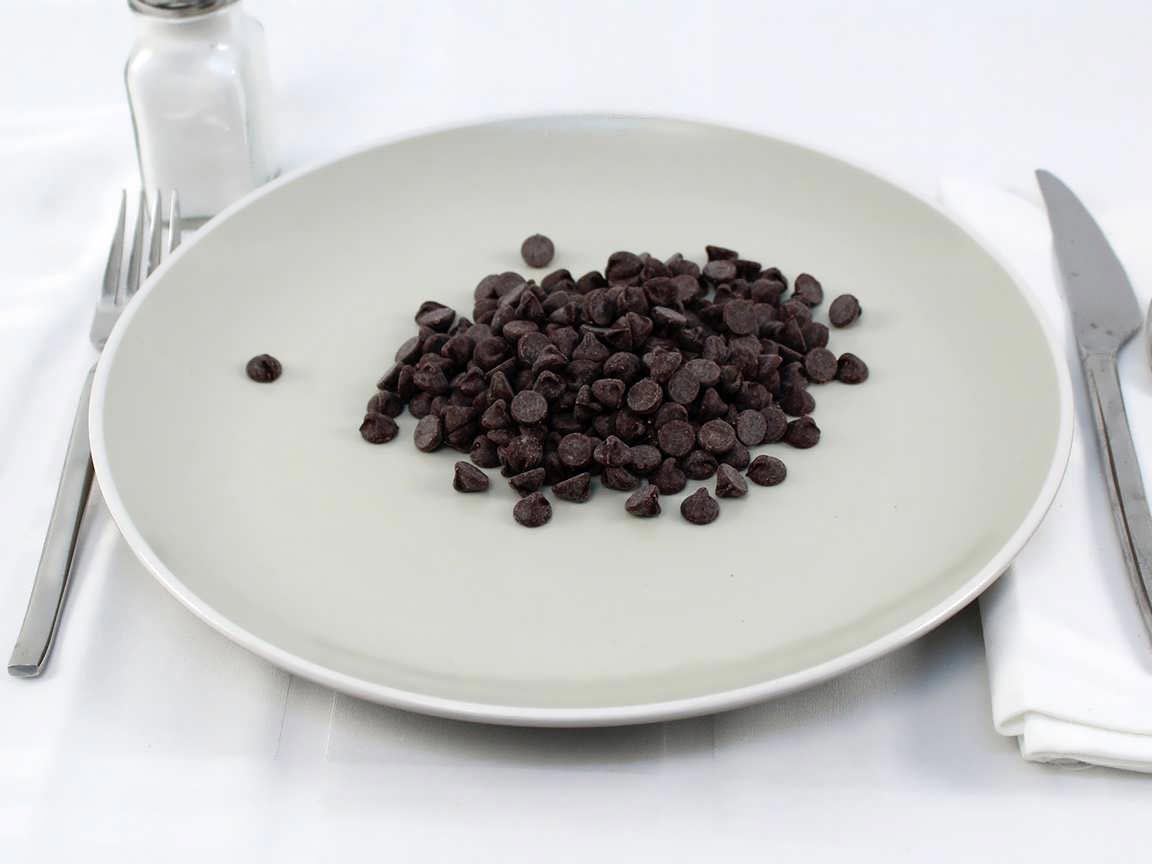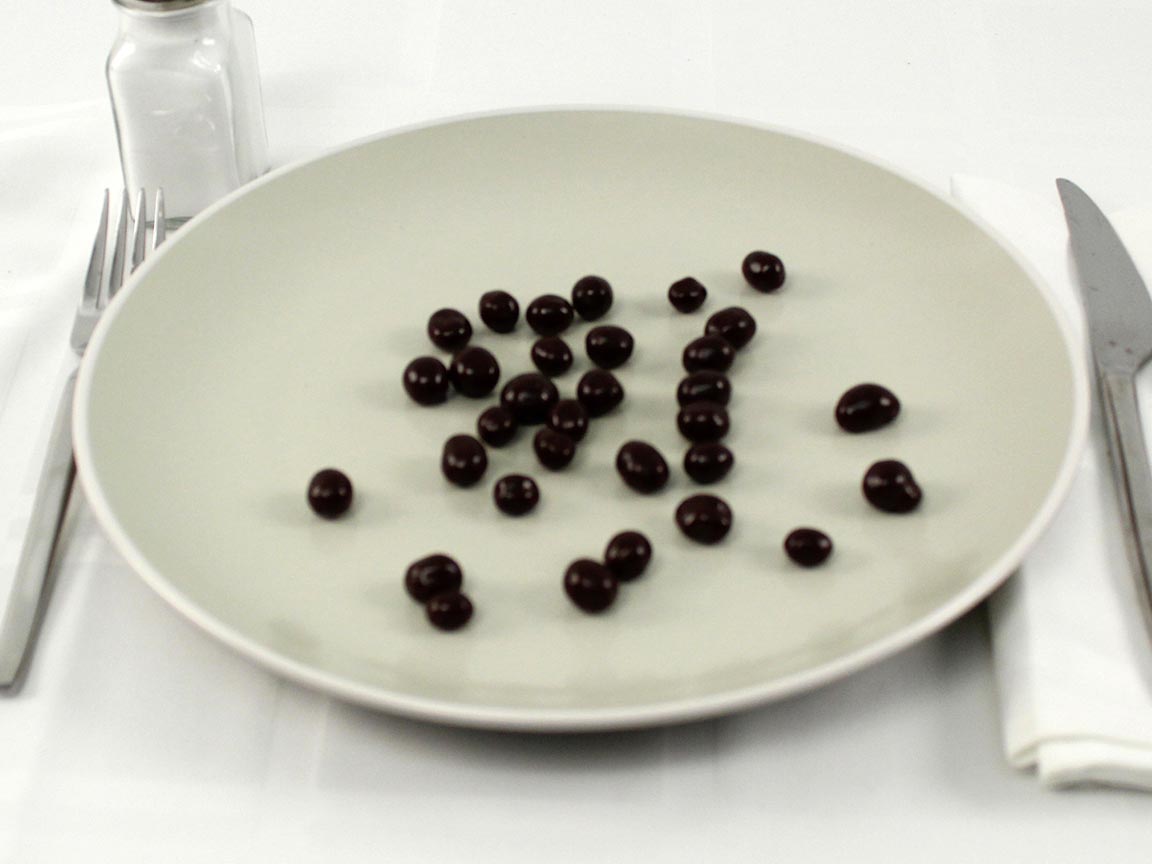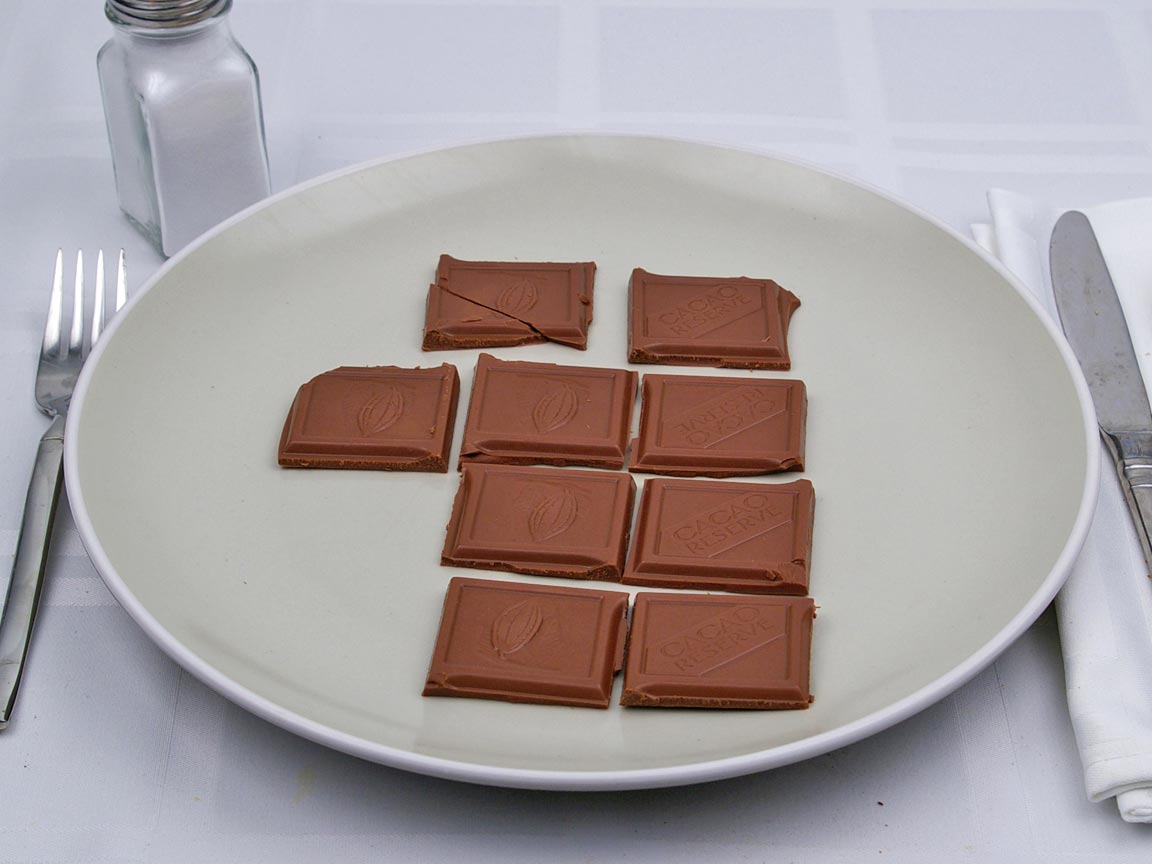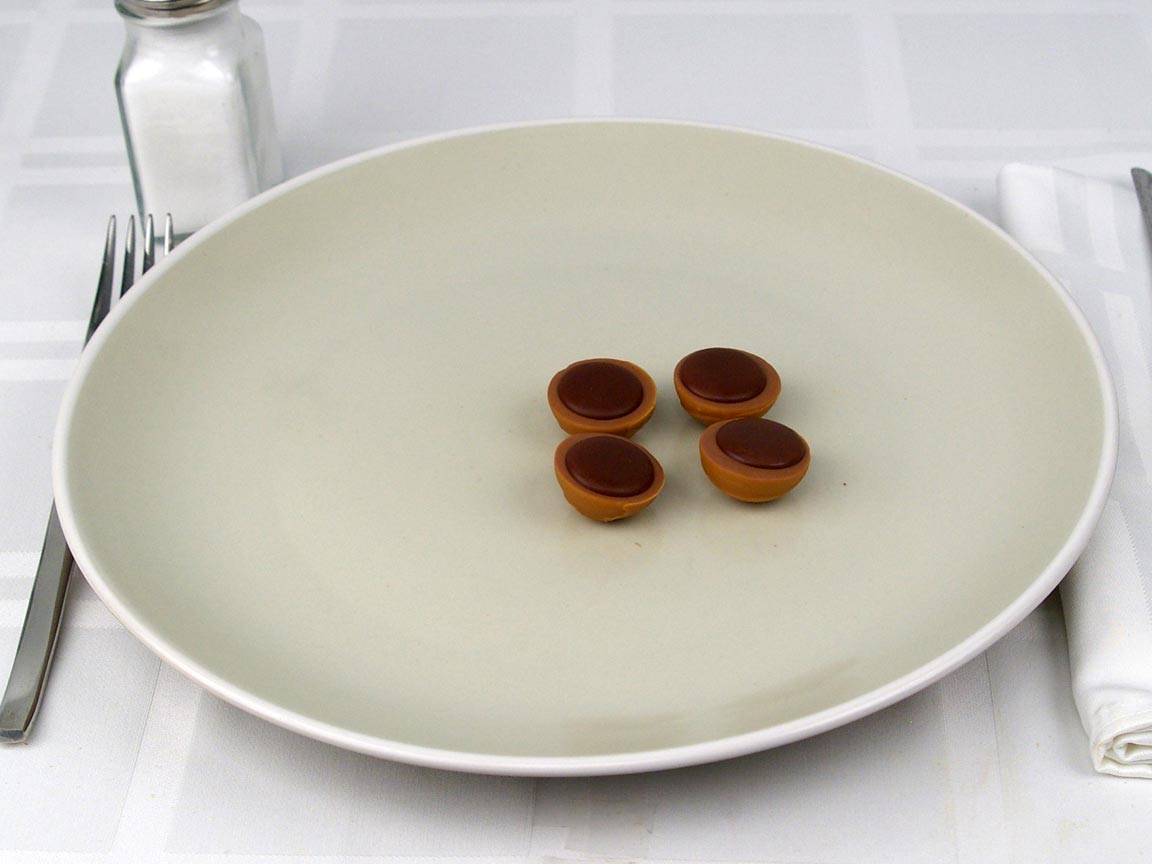611 calories
Serving Size 4 oz (about 113 g)
There is no photo available for this food item however it should be similar in terms of nutritional content and calorie density as the following items. You can use these for references.
(96% similar)

Dark Chocolate Chips
(94% similar)

Dark Chocolate Espresso Beans
(98% similar)

Milk Chocolate
(97% similar)

Ritter Sport Milk Chocolate Bisciut
(95% similar)

Special Dark - Mini
(99% similar)

Toffifay Candy
Serving Size 4 oz (about 113 g)
| Amount Per Serving | ||
|---|---|---|
| Calories 611 | Calories from Fat 319 | |
| % Daily Value* | ||
|
Total Fat
35 |
54 |
|
|
Saturated Fat
21 |
105 |
|
|
Trans Fat
0 |
||
|
Cholesterol
9 |
3 |
|
|
Sodium
27 |
1 |
|
|
Total Carbohydrate
69 |
23 |
|
|
Dietary Fiber
7 |
28 |
|
|
Sugars
54 |
||
|
Protein
5 |
||
* Percent Daily Values are based on a 2,000 calorie diet. Your daily values may be higher or lower depending on your calorie needs.
Available portions
Food analysis
High In Fiber
Junk Food
High In Sugar
Bad Fat Source
High Calorie Density
There is 611 calories in 113 grams of Chocolate, dark,.
With 539 calories per 100 grams, this food would be considered a High calorie density food.
Be carefull, High calorie density food tends to add up calories quickly and you should be carefull with your portion size if you are trying to lose weight.
Chocolate, dark, is High in carbohydrates, Very Low in proteins and High in fats. You can look at the macronutrients graph below for a detailed ratio.
It has High quantity of fibers but also High quantity of sugars. It is recomended to consume less than 25 grams of sugars per day.
This item has High quantity of carbohydrates and fats. This combinasion is usually indicating that you should stay away from this food labeled as "Junk Food".
With 54 grams of "Net carbohydrates" per 100 grams,
it not safe to consume if you are following a Keto or Ketosis diet.
Related Searches
dark
45-
59%
cacao
solids
chocolate
Macronutrients split
45.3% Carbohydrates
51.8% Fats
Nutrients and how much we eat of it play an important role on our health and body composition. To learn more on theses, check our blog posts on Proteins, Carbohydrates and Fats.